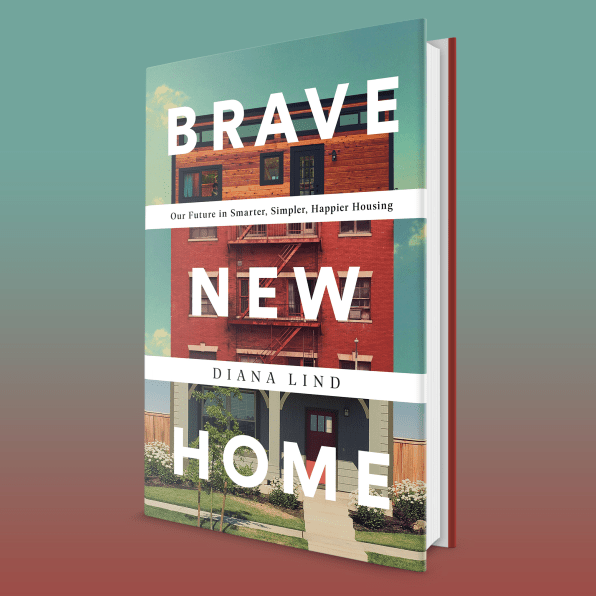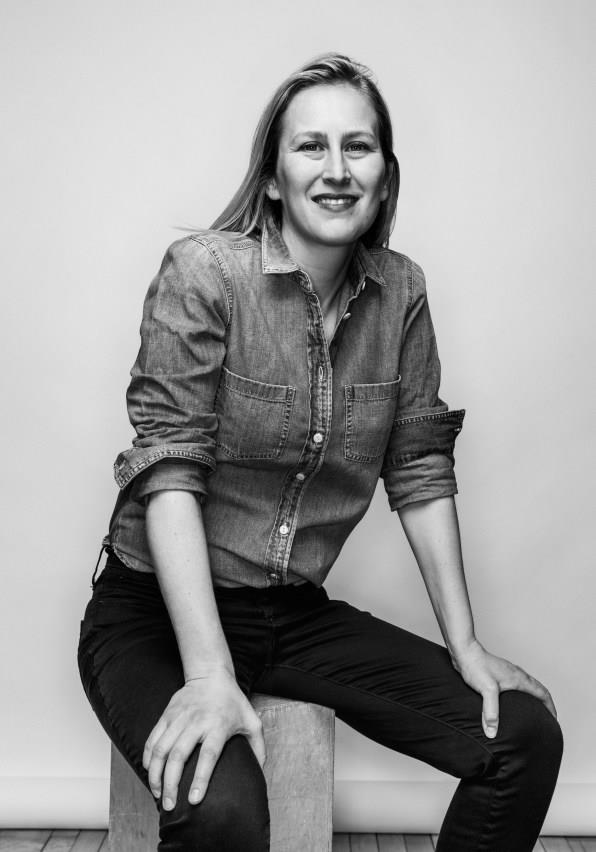What will it take for Americans to ditch their obsession with single-family homes?

A former editor-in-chief and executive director of the nonprofit news organization Next City, Lind is currently the executive director of the Arts + Business Council of Greater Philadelphia. In Brave New Home, she introduces the companies that are meeting these changing demands through the creation of co-living, backyard units, and multigenerational housing, and some of the people who are opting for these once-rare forms of housing.

[Photo: Colin Lenton/courtesy Bold Type Books]
Though zoning and financial limitations have made housing alternatives slow to emerge as realistic options for most people in the United States, Lind shows how laws and markets are beginning to shift to give people more choices than the single-family home of that once-singular American Dream.
“One of the reasons I wrote the book was to help provide some context for people to understand how we’ve stigmatized other types of housing, whether it’s calling co-living ‘adult dorms’ or calling multigenerational living ‘doubling up,’” Lind says. “I see that really starting to shift, especially as there are more diverse coalitions that are built around alternatives to the single-family home.” Here she talks to Fast Company about $15,000 homes, housing for “grandfamilies,” and why homeownership should stop being the primary way Americans build wealth.
Fast Company: Your book argues that demands for housing are changing. New companies have been popping up to try to find new ways of delivering it. How is that working out?
Diana Lind: There’s been a demographic shift underway in the U.S. for decades now that has driven an interest in alternatives to the single-family home. If single-family homes were primarily geared toward a married family of four with a garage and a commute, now there are a lot of other housing types geared toward different segments of the population.
Accessory dwelling units are another example. The idea of building a backyard cottage has been, over the past couple of decades, a smaller niche phenomenon in a lot of places. But now, particularly after statewide housing reforms in California and Oregon and then local zoning reforms in places like Minneapolis, people are seeing that they can build accessory dwelling units to house loved ones.
A lot of people are interested in housing those younger adults who don’t want to live alone but maybe don’t want to live in the main house with the family, or grandparents who are living with the primary family in a multigenerational fashion, or people who are interested in accessing the latent value in their property by turning an accessory dwelling unit into an income-generating property. Many companies are focused on helping people build accessory dwelling units easily in their backyards in a cost-effective manner—the idea being if people could build one for $15,000 in their backyard and it were feasible, who wouldn’t do something like that?
FC: You do an impressive job of distilling the history of housing in the U.S., highlighting how different factors, from zoning to racism to lending practices, have shaped what kind of housing is available and where. How important are these forces today in shaping our housing?
DL: I think there are a couple of key forces that have shaped the demand for single-family homes and the accessibility to them. Prior to the end of World War I, the U.S. government approach to housing was pretty laissez-faire. Following that period there was a combination of a media movement and a government-supported effort to get people to move into their own homes and own them. The messaging back in 1918 was not so dissimilar to today: The best thing that you can do for your children is to own your own home, that you are a morally better person if you are a homeowner, and that you should be owning a single-family home outside of the city.
There have been, for decades, a variety of different incentives for homeownership focused on single-family homes, [such as] the mortgage interest deduction, or the GI Bill, or the way that we support highway infrastructure and road infrastructure to encourage further development outside of cities. I don’t see that support for the homeownership lifestyle changing so much as I see a greater awareness of how zoning has encouraged single-family homes and discouraged other types of housing. That awareness is turning into other housing options. I write about how AARP has really embraced multigenerational housing as part of its support for seniors, and when viewed through its lens, I think that it is helping to build awareness of how to build age-friendly cities. So that will shift how people will view housing in the coming decade.
DL: I think that’s a fascinating exception to the Fair Housing Act, which we all recognize has done a tremendous service in ensuring that housing developments, marketing, and realtor practices are not discriminatory. At the same time, it makes it very hard to create housing specifically targeted to a demographic. So if you wanted to build housing specifically for “grandfamilies,” which are families with grandparents taking care of young children, you can’t market specifically toward that group or restrict the housing to it.
Are there other groups that we might consider to be protected classes that are deserving of housing that’s reserved for them? You certainly could say that some of the income restrictions that are in affordable housing are a way to do that. I think there could definitely be benefits to saying we’re going to create housing that’s specifically geared toward the growing population of multigenerational families, and we are going to be able to openly market it. It’s a super tricky question. People who are fair-housing advocates get very upset because it could lead to increased discrimination, of course. If you got rid of the fair-housing laws, that would be a disaster. But it does seem there is some room for new protected classes that should have housing that’s geared toward them.
FC: It’s not just laws, but sometimes also people’s perceptions that limit the approval and viability of options like multigenerational housing. NIMBYs are notorious for stopping these kinds of projects from coming into neighborhoods. How do you think we can collectively redefine what housing should be?
DL: Part of the answer lies in ensuring that there are some examples, some prototypes of alternative housing that have a cool factor to them. I think that’s important to destigmatize different housing types. In all the chapters I try to give examples of how these alternatives to the single-family home can work at a high end or at a lower end of the market. So you have co-living, which right now is very much geared toward higher-income young people, but by virtue of the fact that they have made shared housing more socially accessible and potentially cool, it has destigmatized the idea of shared housing in some cities and even in the planning departments’ minds in cities. These alternatives can be aspirational in the same way that we think of that single-family home as the aspirational American dream.
You have to be able to show that living multigenerationally could be something that you aspire to, otherwise people are always going to view it as a ‘lesser than.’ The underlying goal of the book is to encourage more housing types, more housing options, and more examples, because I think that the more that we show through the media and through books and through various projects that another way of living is possible, the more that people will be accepting of that and want it in our communities.
DL: Absolutely. I think the moment that we’re in right now is a perfect example of how housing as the primary wealth creation tool is deeply flawed in this country. We’ve spent the past 100 years perfecting the 30-year mortgage and homeownership as a model of wealth creation and we haven’t spent nearly as much time thinking about how we should be supporting people and developing other ideas for how we might build wealth, whether it’s individual wealth or neighborhood wealth or business creation. That contributes to resistance to changing the status quo.
Of course people are afraid of losing money in real estate, because it’s their biggest asset. Another thing that’s really problematic about wealth creation being locked up in residential real estate is that it’s where people live. Homes are this financial commodity, and so I think the more that we rely on this, the more we’re going to always have these conversations about gentrification and displacement and inequality in our cities. I would love to see a future in which our country really reexamines how much we have focused on homeownership as a source of wealth creation and instead starts to think about how to build neighborhood wealth, community wealth, and also wealth outside of real estate in general.
(19)



